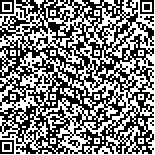| Quote
: |
廖林丽,李翔,王静敏,李新宇,彭清华.基于关联规则和因子分析研究中医治疗视网膜静脉阻塞的组方用药规律[J].湖南中医药大学学报英文版,2020,40(11):1384-1388.[Click to copy
] |
|
| |
|
|
| This paper
:Browser 3284times Download 1864times |
| 基于关联规则和因子分析研究中医治疗视网膜静脉阻塞的组方用药规律 |
| 廖林丽,李翔,王静敏,李新宇,彭清华 |
| (湖南中医药大学, 湖南 长沙 410208;湖南中医药大学, 湖南 长沙 410208;湖南省中医药防治眼耳鼻咽喉疾病与视功能保护工程技术研究中心, 湖南 长沙 410208;中医药防治眼耳鼻咽喉疾病湖南省重点实验室, 湖南 长沙 410208) |
| 摘要: |
| 目的 研究中医治疗视网膜静脉阻塞的组方用药规律。方法 利用中国期刊全文数据库(CNKI)和万方数据知识服务平台(WF),以“视网膜静脉阻塞”为第一主题词,“中药治疗”或“中医药治疗”为第二主题词,检索2000年1月至2020年1月的期刊文献。分别运用SPSS Modeler 18.0和SPSS Statistics 24.0对符合纳入标准的中药做关联规则分析和因子分析。结果 符合纳入标准的方剂151首,涉及药物155种,累计出现频次1 688次。药物使用频次排名前10的为当归、赤芍、川芎、生地黄、丹参、桃仁、红花、牛膝、牡丹皮、茯苓。以甘寒药、苦寒药居多,辛味药、平性药、温性药次之,大多药物归属于肝经。关联规则分析中,规则支持度≥27%的药对组合有10对,提取了规则置信度排名前10的药对组合。因子分析中,提取了9个公因子。结论 中医治疗视网膜静脉阻塞既要行气活血、化瘀通脉,也要利水,活血化瘀要贯穿疾病的始终。临床上,多以活血化瘀药、行气药、利水药、养阴药组合配伍使用。 |
| 关键词: 视网膜静脉阻塞 中医治疗 用药规律 关联规则 因子分析 |
| DOI:10.3969/j.issn.1674-070X.2020.11.017 |
| Received:June 18, 2020 |
| 基金项目:湖南中医药大学中医学国内一流建设学科资助(湘教通〔2018〕469号);中央财政支持地方高校重点学科和中医眼科创新团队建设项目;中医眼科学国家中医药管理局重点学科建设项目;中医五官科学湖南省重点学科建设项目;湖南省中医药防治眼耳鼻喉疾病与视功能保护工程技术研究中心建设项目(2018TP2008)。 |
|
| Based on Association Rules and Factor Analysis to Study Prescription and Medication Rules for Traditional Chinese Medicine Treatment of Retinal Vein Occlusion |
| LIAO Linli,LI Xiang,WANG Jingmin,LI Xinyu,PENG Qinghua |
| (Hunan University of Chinese Medicine, Changsha, Hunan 410208, China;Hunan University of Chinese Medicine, Changsha, Hunan 410208, China;Hunan Engineering Technology Research Center for the Prevention and Treatment of Otorhinolaryngologic Diseases and Protection of Visual Function with Chinese Medicine, Changsha, Hunan 410208, China;Hunan Provincial Key Laboratory for the Prevention and Treatment of Ophthalmology and Otolaryngology Diseases with Traditional Chinese Medicine, Changsha, Hunan 410208, China) |
| Abstract: |
| Objective To study the prescription and medication rules of traditional Chinese medicine (TCM) for retinal vein occlusion. Methods The Chinese Academic Journal Full-text Database (CNKI) and Wanfang Data Knowledge Service Platform (WF) were used to retrieve the journal literatures from January 2000 to January 2020 with "retinal vein occlusion" as the first subject word and "TCM treatment" as the second subject word. SPSS Modeler 18.0 and SPSS Statistics 24.0 were respectively used to conduct association rule analysis and factor analysis on Chinese materia medica meeting the inclusion criteria. Results A total of 151 prescriptions met the inclusion criteria, involving 155 herbs, with a cumulative occurrence of 1 688 times. The top 10 herbs used frequency were Radix Angelicae Sinensis, Radix Paeoniae Rubra, Rhizoma Ligustici Chuanxiong, Radix Rehmanniae Recens, Radix Salviae Miltiorrhizae, Semen Persicae, Flos Carthami, Radix Achyranthis Bidentatae, Cortex Moutan Radicis and Poria. Sweet cold and bitter cold herbs were in the majority, followed by pungent herbs, flat herbs, and warm herbs. Most herbs had liver channel tropism. In association rule analysis, 10 pairs of herbs with rule support≥27% were selected, and the top 10 combinations with rule confidence were extracted. In factor analysis, 9 common factors were extracted. Conclusion Traditional Chinese medicine treatment of retinal vein occlusion should not only promote Qi movement, activate blood circulation, remove blood stasis, and unblock meridians, but also promoting urination. Activating blood circulation and resolving blood stasis should run through the whole process of diseases treatment. Clinically, the combination of activating blood circulation and resolving stasis herbs, promoting Qi circulation herbs, promoting urination herbs, and nourishing Yin herbs is often used. |
| Key words: retinal vein occlusion traditional Chinese medicine treatment medication rules association rules factor analysis |
|

二维码(扫一下试试看!) |
|
|
|
|


